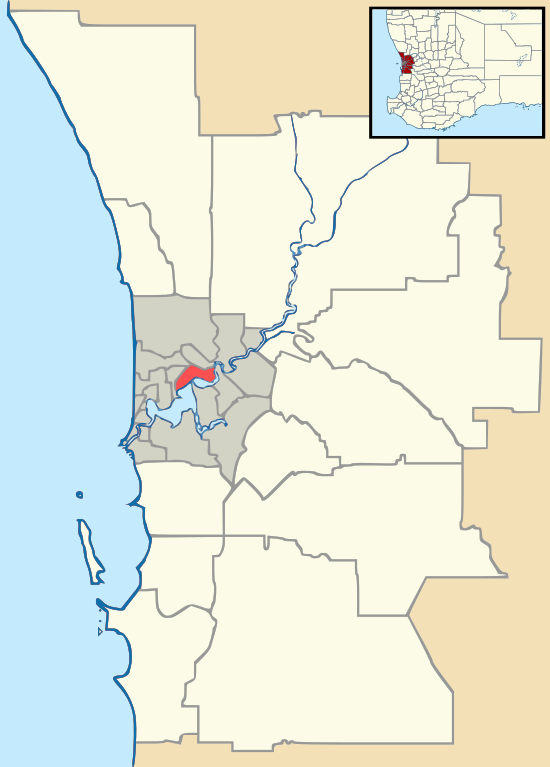Dalkeith, Western Australia
| Dalkeith Perth, Western Australia | |||||||||||||||
|---|---|---|---|---|---|---|---|---|---|---|---|---|---|---|---|
|
Kylemore residence on Jutland Parade built 1938 | |||||||||||||||
 Dalkeith | |||||||||||||||
| Coordinates | 31°59′49″S 115°47′49″E / 31.997°S 115.797°ECoordinates: 31°59′49″S 115°47′49″E / 31.997°S 115.797°E | ||||||||||||||
| Population | 4,258 (2011 census)[1] | ||||||||||||||
| Established | 1897 | ||||||||||||||
| Postcode(s) | 6009 | ||||||||||||||
| Location | 6 km (4 mi) SW of Perth CBD | ||||||||||||||
| LGA(s) | City of Nedlands | ||||||||||||||
| State electorate(s) | Nedlands | ||||||||||||||
| Federal Division(s) | Curtin | ||||||||||||||
| |||||||||||||||
Dalkeith is a suburb of Perth, Western Australia in the City of Nedlands. The suburb is surrounded on three sides by the Swan River.
History
The suburb takes its name from a cottage built in 1833 by Captain Adam Armstrong and his sons, early settlers of the area who arrived aboard Gilmore. Armstrong, previously being the manager of the Earl of Dalkeith's estate in Scotland, named the cottage "Dalkeith Cottage".[2] The cottage was on a farm bought by James Gallop, who built a two-storey house in the 1870s, now known as Gallop House. In 1897 the farm was sold off in lots for residential use. The house was bought by the state government in 1911, and was neglected for several decades before being restored in 1963-4.[3]
Jutland Parade is unarguably the most exclusive and expensive street in Dalkeith. Jutland Parade was made famous by former Dalkeith resident in the 1980s, Alan Bond, who owned the yacht that won the 1983 America's Cup. Jutland Parade is considered one of the most expensive streets in Perth, and has many multimillion-dollar estates.[4] Hobbs Avenue was once voted as being one of the best streets to live in the world, housing many of Western Australia's elite families, while Waratah Avenue was once home to the Premier of Western Australia, Charles Court.
Along the southern riverside lies Sunset Hospital, a health facility built in 1904 and closed in 1995. Several of the buildings are heritage listed, limiting the money that could be made by selling the prime location land. In 2005, the University of Western Australia entered into an agreement with the state government to redevelop the site, including a museum, aged care and residential apartments.[5] In September 2007 UWA withdrew from the agreement, citing delays and restrictions caused by the heritage status of the site.[6][7]
Secession
In early 2009, residents of Dalkeith formed a movement to secede from the City of Nedlands and form their own local government area, most likely the Shire of Dalkeith. These residents suggest secession is economically viable - the Shire of Peppermint Grove (the smallest local government area in Australia) has been established since 1895 and currently has about 1600 residents, whereas Dalkeith currently has over 4000.
References
- ↑ Australian Bureau of Statistics (31 October 2012). "State Suburbs: Dalkeith". 2011 Census QuickStats. Retrieved 4 July 2012.

- ↑ Western Australian Land Information Authority. "History of metropolitan suburb names – D". Retrieved 2007-05-15.
- ↑ Gallop House profile accessed 1 October 2007.
- ↑ "Perth's priciest homes sold in 2016". perthnow.com.au.
- ↑ New community use for Sunset Hospital site 18 May 2005. Department of Housing and Works, accessed 1 October 2007
- ↑ Sun sets on UWA deal 2007-09-15, The Post. Accessed 1 October 2007
- ↑ UWA writes off Sunset cultural plan Elizabeth Gosch, 19 September 2007. The Australian, accessed 1 October 2007